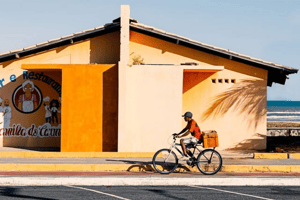The market for route optimization continues to grow as dispatchers are seeking ways to optimize...
Navigating the Fast Lane: How Route Optimization Streamlines Your Operations
Customer expectations and quick delivery are two unique fulfillment cycle levers that logistics operators prioritize while making supply chain decisions.

Certain factors such as order processing, dispatch plan generation, resource allocation, and route selection are interdependent in reaching new heights of efficiency and excellence to meet SLA compliance.
Route selection is among those components that have received detailed attention in recent years, resulting in an advancement of the route optimization process. The global route optimization software market is expected to grow up to 12.5 billion by 2030, with an uprising growth of 11.56% CAGR.
Figuring out how best to traverse shipment from dispatch to delivery is a complex task and is complimented by multiple decision-making stages. While discussions about successful logistic operations focus on meeting delivery commitments, deciding to take an ideal route remains challenging and increasingly necessary.
Here are different phases of supply chain operations where route optimization helps operators navigate the fast delivery lane.
Different Phases of Supply Chain Operations
When logistic operators set out to streamline delivery operations, route optimization is crucial in ensuring dispatch routes are planned and allocated with previous learnings incorporated to facilitate desired efficiencies and outcomes from the supply chain.
Planning Phase
Dispatch success begins with a concrete and data-oriented approach to plan specific tasks based on order variations and generate an optimal route to ensure the most available driver picks up a shipment and delivers it to a designated address. Streamlining and creating a full-proof delivery schedule is a key differentiating factor that enables businesses to perform in a tight market.
Route optimization software empowers dispatchers to automate a route plan by creating order batches to ensure one driver covers multiple deliveries. Businesses can significantly benefit from it as it reduces manual intervention and time consumption to create plans and allocates order delivery to the most suitable on-ground resources.
Execution Phase
This stage focuses on order fulfillment in the earliest and most convenient way. A streamlined delivery operation often allows dispatchers to scale their delivery capacity optimally. Route optimization software helps ensure delivery resources get the end-to-end direction of the assigned route and get quick resolutions for any unforeseen on-ground challenges.
The real-time navigation to designated addresses helps drivers to comply with SLAs and reduces probability of covering extra miles to locate a specific location. Similarly, a quick turnaround of solutions to any unexpected challenge allows drivers to deliver efficiently and on time. This proactive approach enhances operational performance and customer satisfaction.
Analysis Phase
The foundation of every successful process is learning and getting insights from past events. The data from previous assignments helps understand the end-to-end pattern of delivery orders, peak demands, customer expectations, and associated bottlenecks in completing a planned delivery.
Route optimization software provides detailed real-time, historical, and GIS data insights. An ideal and efficient route is generated and assigned to drivers based on captured data and pre-defined delivery parameters.
.jpg?width=900&height=588&name=Route%20optimization%20software%20(1).jpg)
Impact of Route Optimization in Streamlining Operations
Data Insights to Predict ETAs
53% of customers can switch to a competitor after one bad experience. Sharing an accurate ETA helps businesses to develop trust and transparency with their customers. Route optimization software enables operators to calculate and predict accurate delivery ETAs by analyzing available data, tribal knowledge, and delivery preferences.
Multiple Deliveries in a single route
Route optimization software leverages automated algorithms to create automated plans, schedule routes to manage vehicle journeys, and allow multiple deliveries in one go. While making a delivery route, orders with similar delivery preferences and locations are intelligently clubbed and sequenced to ensure proper distribution to best-suited drivers.
Maximize Resource Productivity
Drivers are often tasked with multiple deliveries at different addresses. Route optimization enables drivers to get turn-by-turn navigation, street-level routing, and real-time traffic updates to enhance a quick and seamless delivery experience.
Reduce Operational Costs
An optimal route plan enables drivers to cover the necessary distance while minimizing unnecessary mileage. This strategic approach helps in effectively managing fuel costs for each delivery and contributes to overall fuel efficiency. Additionally, dispatchers ensure no overlap between delivery paths assigned to different drivers by optimizing routes. Through this, businesses can prevent redundancy and can also eliminate the possibility of double fuel consumption due to inefficient routes.
Conclusion
As a logistics business experiences growth and success, the need to streamline operations critical to its success also rises. The surge in operations also calls for increased variations, expectations, and challenges at different levels.
Route optimization is one of the key enablers that powers efficiency-driven delivery experiences to involved stakeholders. The unparalleled convenience of selecting and navigating an ideal route for a given scenario makes route optimization a perfect addition for any logistic business.
We've got you covered if you're looking for more insight on how route optimization can streamline your operations. Contact us or reach out to talk in detail about it.



